|
|
|
Michael Janiszewski, Fotoarbeiten 1990-1999
This volume is a collection of the photography of Michael Janiszewski, born in Berlin in 1957, made during the Nineties. The images, reproduced in large sizes and in color and black and white on glossy paper, illustrate psychological, sexual and political nightmares. The protagonist in the German artist's photographs is an extravagant model, either a real man or a mannequin, in different poses. The clothes, makeup, the feminine poses of the man in the photographs aren't meant to create an illusion of transvestitism, but a sense of bad taste and of masquerade. Text by Heinz Schultz in English and German.
Michael Janiszewski, Fotoarbeiten 1990-1999/Photography 1990-1999, Camera Austria Edition (Sparkasserplastz 2, Graz,
www.camera-austria.at), 2000, 88 pages, 21,5 x.30,5 cm.
|
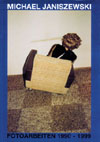
|
Andy Warhol. Series and Singles
This catalog was compiled for the exhibition of the same name at the Fondation Beyeler in Basle. Since 1998 the Fondation, designed by Renzo Piano, has contained three works by the artist in its collection. Numerous pieces by Warhol have been gathered together for the exhibition, taken from the most important museums in Europe, America, Japan, Australia and noted private collections. Highlights included works like Troy, Coca-Cola and Suicide (Purple Jumping Man), on show to the public for the first time in 30 years.
The book contains high quality color reproductions complemented by essays by Ernst Beyeler, Georg Frei, Peter Gidal and Edward Sanders.
Andy Warhol. Series and Singles, Fondation Beyeler, 2000, p. 215, 24,5 x 30 cm.
|
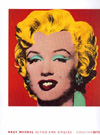
|
The aesthetics of comics
In this book David Carrier, professor of philosophy at the Carnegie Mellon University, looks at popular cartoons from America, Europe and Japan in an attempt to bring to light the aesthetic problems and relationships between this type of artistic communication and other expressive forms of the visual arts. Starting from the early Renaissance, Carrier recreates the history of word and image combination, and arrives at the conclusion that the cartoon genre is an art form that can successfully bring together verbal and figurative elements.
There is an interesting selection of black and white images such as the famous Dick Tracy and Batman comic strips. The title of each section and page number are also livened up by comic-style details.
David Carrier, The aesthetics of comics, The Pennsylvania State University, 2000, p. 135, 16 x 24 cm.
|
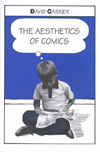
|
Thinking Art. The Game of Rules
A collection of critical essays by Joseph Kosuth, Jean Baudrillard and Paolo Fabbri realized for the secondworkshop Rules and Anarchy, held at the Querini Stampalia Foundation in Venice, in May 1998. The texts in the catalogue are: The Publishing Project Thinking Art by Valeria Cantoni and Leonardo Previ; Thinking Art. the Game of Rules by Corrado Sinigaglia and Antonio Somaini; Worldly Tautologies and Other CommentsThe Round Dance of the Muses, a conversation with Paolo Fabbri and The Game of metamorphoses, a conversation with Jean Baudrillard. The graphics designed by Kosuth are interesting, an elegant play of contrast between yellow pages and black text.
Thinking Art. The Game of Rules, with Joseph Kosuth, Jean Baudrillard and Paolo Fabbri, edited by Corrado Sinigaglia and Antonio Somaini, a+mbookstore-trivioquadrivio (Via Ariberto 21, Milan,
www.triq.it), 2000, 71 pages, 18,5 x 23cm.
|
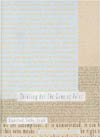
|
Adachiara Zevi, Arte USA del Novecento
Adachiara Zevi, professor of Art History at the Academy of Belle Arti in Naples, traces an in-depth and chronological history of the movements, the poetics, and the protagonists of American art in the Twentieth Century, using different thematic approaches. Accompanying the text are three sections of black and white photos, serving as historical and critical documents of great interest.
Adachiara Zevi, Arte USA del Novecento, Carocci editore (Via Sardegna 50, Rome,
www.carocci.it ), 2000, 341 pages, 15 x 23 cm.
|
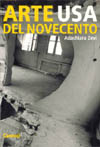
|
|
|
|